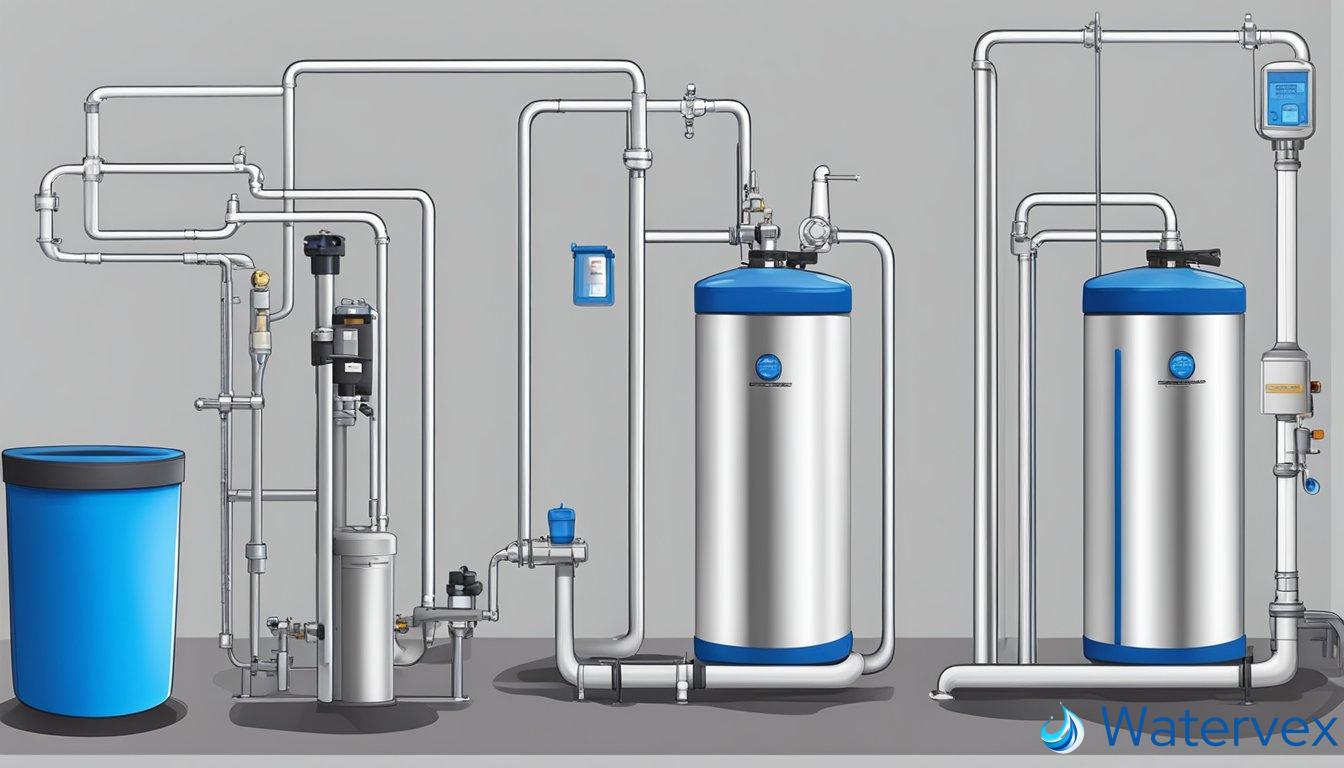When thinking about installing a water softener in your home, you might wonder about its placement in relation to your water heater. Addressing hard water is essential—the high mineral content, especially calcium and magnesium, leads to limescale build-up and can have detrimental effects on water pipes and appliances. Water softeners are a popular solution, but their effectiveness can depend significantly on whether they’re installed before or after the water heater.

Hard water not only affects appliances but also impacts water quality. A water softener installed correctly can mitigate these effects by exchanging hardness ions like calcium and magnesium for sodium or potassium ions. This process, known as ion exchange, effectively prevents the minerals from causing scale build-up in water heaters and other appliances. However, maintenance and an understanding of your water supply’s specific challenges—such as the presence of iron or sediment—are crucial to ensure the longevity and efficiency of your water softening system. Positioning your water softener appropriately maximizes these benefits, but it’s important to consider individual home needs and water characteristics.
Key Takeaways
- Water softeners positioned before a heater can reduce limescale and improve appliance longevity.
- Proper maintenance and understanding your water’s mineral content are crucial for water softener efficiency.
- The effectiveness of a water softener system can be influenced by the specific condition of the household water supply.
The Impact of Water Softeners on Home Water Quality
Water softeners play a critical role in transforming the composition of your water, with tangible effects on everything from taste to appliance longevity.
What Are the Visible Changes in Water Quality After Installing a Water Softener?
Once you install a water softener, you’ll notice changes in your water’s look and taste. Soft water no longer leaves mineral buildup and limescale, so your faucets and showerheads will stay cleaner. The water feels silkier during showers, and without calcium and magnesium, it’s clearer and can actually seem to have a more refreshing taste.
How Do Water Softeners Affect Appliance Longevity and Efficiency?
Water softeners extend the life of your appliances by preventing scale buildup. This means your water heaters, dishwashers, and washing machines will not only last longer but also run more efficiently. By removing minerals through the ion exchange in the resin bed, the water flow to your appliances is cleaner, reducing the strain on their internal components. Over time, this translates to a noticeable difference in both the flow rate and the energy consumption needed to heat hot water or cold water.
Understanding Water Softening Methods and Maintenance

When considering a whole house water filtration system, it’s essential to focus on the roles of sediment filters and carbon filters. These integral components work diligently to remove various contaminants from your home’s plumbing system. Your sediment filter, often the first line of defense, catches dirt and debris, while the carbon filter tackles chlorine and organic compounds, contributing to improved taste and odor.
For water softening systems, the process revolves around replacing hard minerals like calcium and magnesium with sodium via resin beads in the unit. Salt-based softeners function through a regeneration cycle, where saltwater from the brine tank flushes the system, recharging the beads.
In terms of maintenance, it’s vital to ensure salt levels are sufficient and to occasionally clean the tank to prevent salt bridging and maintain efficiency. Moreover, examine the settings of your pressure tank and ensure it aligns with your water usage, as the backwashing phase is pivotal for the longevity of the resin beads.
To verify if your softener works effectively, consider testing your water before and after installation. Noticeably, after having a softener in place, you should experience less scale buildup, better appliance performance, and more pleasant water for drinking and bathing.
Regular Maintenance Checklist:
- Check salt levels: Monthly.
- Inspect for salt bridges: Quarterly.
- Clean the brine tank: Every 6-12 months.
- Test water hardness: Annually.
- Replace sediment and carbon filters: As recommended by manufacturer.
Remember, your commitment to maintaining your water softening system not only prolongs its lifespan but also ensures you continually reap the benefits of soft, filtered water.
Challenges and Solutions for Different Water Supply Sources

When you’re looking at water softening solutions for your home, understanding the specific challenges of your water supply is paramount.
Municipal Water
Problem: Municipal water tends to have disinfection byproducts from the disinfection process, and the level of hard water minerals can vary.
Solution: A whole-house water filter can tackle those disinfection byproducts, and a water softener installed at the point of entry deals with the hard water minerals.
Well Water
Private well water’s quality can differ significantly.
- Iron: Well water may contain high levels of iron, leading to stains and taste issues.
- Iron filter before a water softener can prevent these problems.
- Sediment: A sediment pre-filter can help if water is high in particulate matter.
Corrosion
- Issue: Both sources can suffer from corrosion in pipes.
- Solutions: Inspect your pipes for corrosion regularly and consider a specialized filter system if needed.
Contamination
- Concern: Contamination from local environmental factors is more common with private wells.
- Action: Regular testing and a tailored filtration system give peace of mind about your water quality.
Remember: Always consult with a water treatment expert to assess your local water supply for a personalized solution.
Quick Tip: To maintain consistent water pressure, install your water softener downstream of your pressure tank if you’re on well water. This setup avoids inadequate water flow and ensures proper regeneration of your softener.

